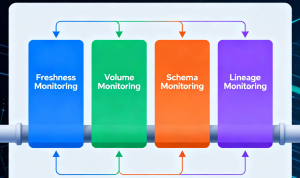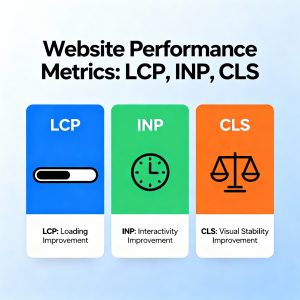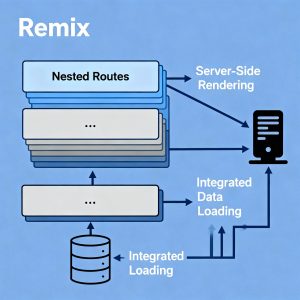Ensuring software applications deliver reliable performance under diverse conditions is a cornerstone of modern software development. Performance testing plays a pivotal role in identifying system bottlenecks, optimizing resource usage, and safeguarding user experience—especially when applications face heavy traffic or complex scenarios. For quality assurance (QA) managers, mastering the performance testing life cycle is essential to delivering robust, high-performing applications that align with both business goals and user expectations.
Understanding the Performance Testing Life Cycle
The performance testing life cycle provides a structured approach to evaluating and enhancing software performance. It is not merely about confirming that an application functions under load; rather, it focuses on ensuring the system can scale, respond swiftly, and operate dependably as user demands increase. By following a systematic life cycle, QA managers can proactively address potential issues, optimize system behavior, and align software performance with organizational objectives.
Why the Performance Testing Life Cycle Matters
The performance testing life cycle is crucial for several reasons:
- Preventing Performance Failures: Early detection of bottlenecks and vulnerabilities helps avoid costly failures under heavy usage.
- Ensuring Scalability: Applications must be able to grow with user demand. Performance testing validates that systems can scale effectively.
- Enhancing User Experience: Slow load times, crashes, or lag can drive users away. Rigorous testing ensures a smooth, reliable experience.
- Optimizing Resources: Identifying inefficient resource usage—such as excessive memory or CPU consumption—leads to cost savings and improved efficiency.
- Supporting Business Goals: High-performing applications foster user satisfaction and retention, directly contributing to business success.
Types of Performance Testing
To thoroughly evaluate software performance, QA managers should be familiar with several key types of performance testing:
- Load Testing: Simulates real-world user loads to verify that the application can handle expected traffic without performance degradation.
- Stress Testing: Pushes the system beyond its anticipated limits to determine its breaking point and assess behavior under extreme conditions.
- Endurance Testing: Also known as soak testing, this evaluates system stability over extended periods to detect issues such as memory leaks or resource depletion.
- Spike Testing: Assesses how the application responds to sudden, sharp increases in user traffic, ensuring it can recover quickly from unexpected surges.
- Scalability Testing: Determines how well the system can scale—either vertically by adding more resources or horizontally by adding more servers—as user demand increases.
- Volume Testing: Focuses on the application’s ability to manage large volumes of data, ensuring optimal performance as data grows.
Key Stages of the Performance Testing Life Cycle
A well-defined performance testing life cycle consists of multiple stages, each contributing to the overall effectiveness of the process.
1. Requirement Analysis
The first stage involves gathering and documenting performance requirements. QA managers collaborate with business analysts, product managers, and developers to define expected user loads, performance benchmarks, and critical business functions. Clear requirements ensure that testing objectives align with real-world expectations and business needs.
Who is involved: QA managers, business analysts, product managers, developers
How it is done: Document business goals, identify peak user loads, and establish performance benchmarks
Benefit: Establishes a solid foundation for all subsequent testing activities
2. Test Planning
With requirements in place, the next step is to create a detailed performance testing plan. This plan outlines the scope of testing, the tools and techniques to be used, the test environment, and the specific scenarios to be evaluated. Selecting the right testing tools—such as JMeter, LoadRunner, or Gatling—is a critical part of this stage.
Who is involved: QA managers, performance testers, technical architects
How it is done: Develop a comprehensive test plan, specify test environments, and define success criteria
Benefit: Ensures an organized, focused, and effective testing process
3. Test Environment Setup
Setting up a realistic test environment is essential for accurate results. The test environment should closely mirror the production environment, including hardware, software, network configurations, and data. Any discrepancies can lead to misleading results.
Who is involved: QA teams, system t500_prod_administrators, IT infrastructure teams
How it is done: Configure hardware, software, network, and data to match production
Benefit: Ensures test results accurately reflect real-world performance
4. Test Execution
At this stage, performance tests are executed according to the plan. Depending on the objectives, this may include load, stress, endurance, or spike testing. Performance testers simulate planned traffic and monitor key metrics such as response times, throughput, and resource usage.
Who is involved: Performance testers, QA manager
How it is done: Simulate user traffic, monitor performance data
Benefit: Validates system behavior under various conditions
5. Result Analysis and Reporting
After test execution, the results are analyzed to identify performance bottlenecks, failures, or areas for improvement. Metrics such as response times, error rates, and resource utilization are compared to predefined benchmarks.
Who is involved: Performance testers, developers, QA managers
How it is done: Analyze performance data, identify deviations, and evaluate impact
Benefit: Provides actionable insights for optimization
6. Optimization and Tuning
Based on analysis, the system may require optimization. This could involve code improvements, configuration changes, database query optimization, or hardware upgrades. Additional tests are conducted to validate the effectiveness of these optimizations.
Who is involved: Developers, system architects, performance testers
How it is done: Implement and test optimizations
Benefit: Ensures the application meets performance goals and scales effectively
7. Final Testing and Sign-off
The last stage involves conducting final tests to confirm that all performance requirements are met. Once the system demonstrates stability and scalability under expected loads, it is ready for deployment.
Who is involved: QA managers, performance testers
How it is done: Perform final tests, document results, obtain approval
Benefit: Guarantees the system is production-ready and meets user expectations
Best Practices for Performance Testing
To maximize the effectiveness of performance testing, QA managers should follow these best practices:
- Start Early: Integrate performance testing early in the development lifecycle to identify and address bottlenecks sooner.
- Use Realistic Scenarios: Ensure test scenarios closely mimic actual user behavior and production conditions.
- Test Across Environments: Validate performance on multiple platforms, devices, and environments for comprehensive coverage.
- Automate When Possible: Automating tests improves consistency and efficiency.
- Monitor Continuously: Regular monitoring throughout development, testing, and post-deployment ensures ongoing optimization.
Leveraging External Testing Resources
Many organizations benefit from partnering with external testing providers that offer access to a global network of testers. These partnerships enable comprehensive testing across diverse environments, devices, and user scenarios, ensuring applications perform seamlessly worldwide.
Conclusion
For QA managers, understanding and implementing a robust performance testing life cycle is critical to delivering software that performs reliably, scales efficiently, and meets both business and user expectations. By following a structured approach and adhering to best practices, QA managers can ensure their applications are ready for the challenges of real-world usage.
Read more such articles from our Newsletter here.



